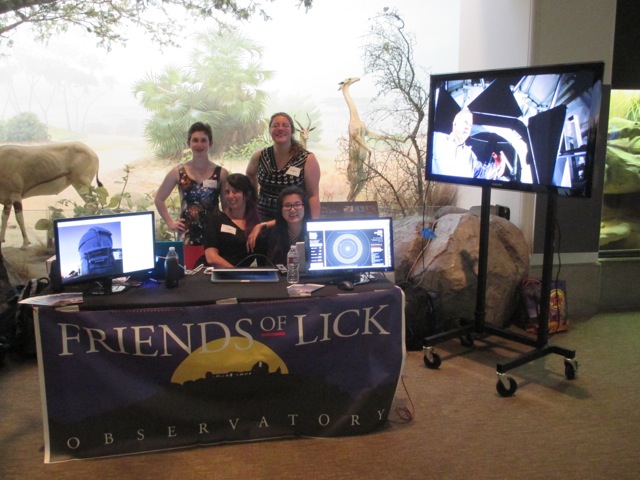-
UC Berkeley Astronomers Lead New NASA-Funded Search for Habitable Planets
April 22, 2015
Department of Astronomy faculty member James Graham will lead one of the 16 new projects funded by NASA in efforts to streamline the search for habitable planets. The project is part of the newly announced NExSS (Nexus for Exoplanet System Science) which seeks to bring together "the best and the brightest" to oversee the search. The Berkeley "exoplanets unveiled" project, which will work alongside scientists at Stanford, is unique due to it's involvement of the "Gemini Planet Imager, a new instrument for the Gemini Observatory that began its exoplanet survey in November 2014; GPI has already imaged two previously known exo-planets and disks…
Tags:More -
Berkeley Participates in Yuri’s Night Celebration at CalAcademy
April 16, 2015
Every year in April a world-wide celebration is held to honor Yuri Gagarin, the first human being to venture into space. This year, members from the UC Berkeley Department of Astronomy took part in honoring this historical achievement with a Yuri's Night celebration at the California Academy of Sciences. Graduate students Erik Petigura and Jason Wang managed telescope viewings on the Academy's living roof, while graduate student Lauren Weiss helped manage the Friends of Lick Observatory table in the African Hall. The table was set up with a live feed and prerecorded footage to the APF (the Automated Planet Finder) and included the Superplanet…
More -
Cosmic Census Finds Billions of Planets That Could Be Like Earth
November 4, 2013
"One out of every five sunlike stars in the galaxy has a planet the size of Earth circling it in the Goldilocks zone — not too hot, not too cold — where surface temperatures should be compatible with liquid water, according to a herculean three-year calculation based on data from the Kepler spacecraft by Erik Petigura, a graduate student at the University of California, Berkeley. Mr. Petigura’s analysis represents a major step toward the main goal of the Kepler mission, which was to measure what fraction of sunlike stars in the galaxy have Earth-size planets. Sometimes called eta-Earth, it is an…
Tags:More -
Astronomers answer key question: How common are habitable planets?
November 4, 2013
NASA’s Kepler space telescope, now crippled and its four-year mission at an end, nevertheless provided enough data to answer its main research question: How many of the 200 billion stars in our galaxy have potentially habitable planets? Based on a statistical analysis of all the Kepler observations, astronomers at UC Berkeley and University of Hawaii, Manoa now estimate that one in five stars like the sun have planets about the size of Earth and a surface temperature conducive to life. Full article can be found here.
More


